The problem with Pugs' eyes
Pugs and other ‘flatter faced’ breed of dog (such as the Shih Tzu, Lhasa Apso and French Bulldog) are prone to getting eye problems. This can vary from progressive scarring and brown pigment building up on the cornea (the normally clear part of the eye) to painful ulcers (a wound on the cornea).
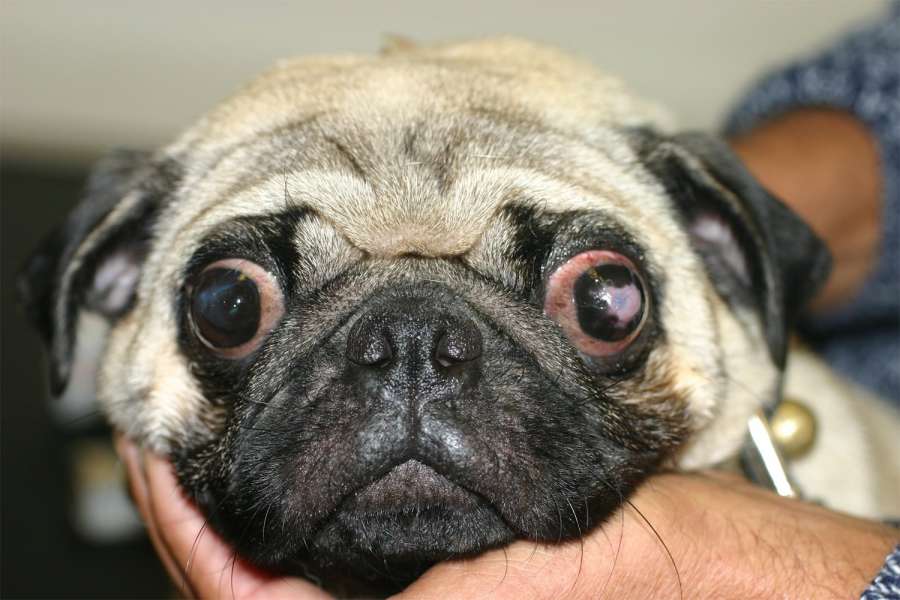
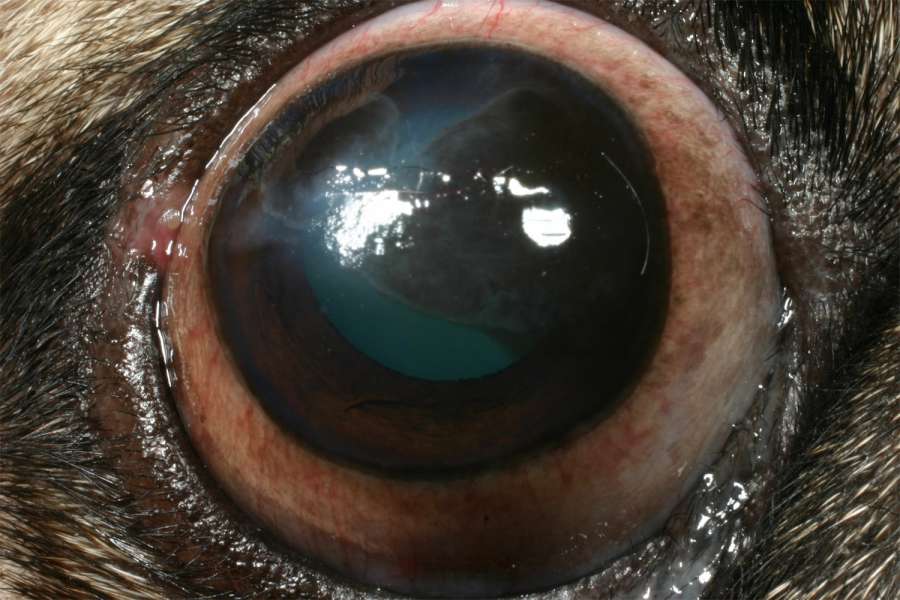
Why do Pugs and similar breeds of dog get so many eye problems?
- These dog types have a ‘flatter face’ skull conformation which results in very shallow orbits (the socket in which the eye sits) which leads to very bulgy, ‘sticky-out’ eyes. This means that both eyes are more likely to be traumatised/scratched especially if he/she insists on putting his/her head into inappropriate places!
- The eyelids of these dogs are much too long for the size of the eye. This means that the dogs cannot blink properly and the clear part of the eye (the cornea) becomes exposed and damaged. You might have even noticed your own dog sleeping with his/her eyes open!
- The lower eyelid close to the nose of these dogs often roles inwards. The eyelashes then rub directly onto the clear part of the eye (cornea) causing further damage.
- Some of these dogs have extra eyelashes either on the edge or underneath the eyelid. These hairs directly rub on the cornea again causing damage.
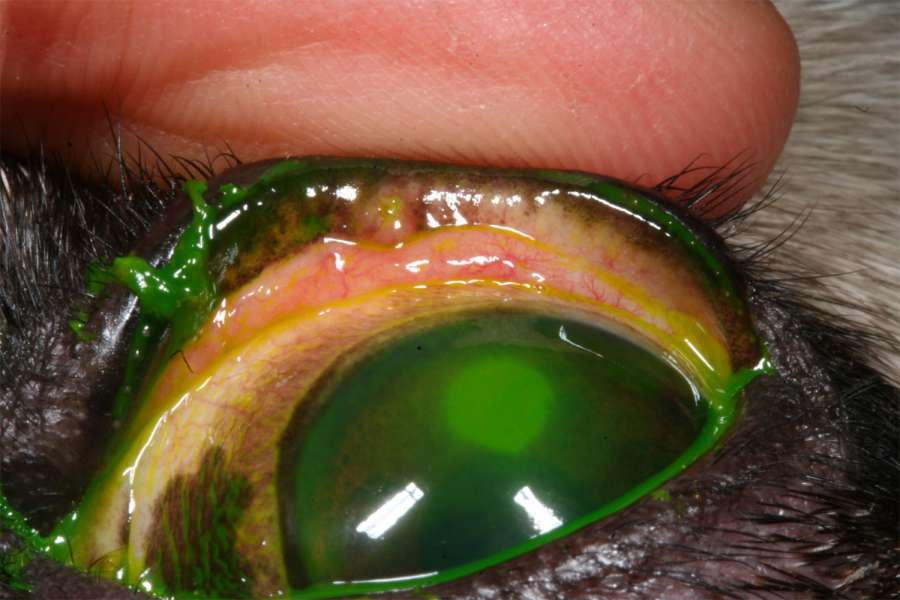
- Some of these dogs are prone to developing dry eye meaning that they do not produce enough tears. Tears are very important in maintaining the eye’s surface health. So, if the tears are in short supply then the eye is at risk of developing wounds, as well as the build-up of brown pigment on the surface of the eye which could affect your dog’s vision.
- The ability for a normal corneal wound or ulcer to heal in these dogs seems to be reduced (as compared to dogs with longer noses such as a Border Collie). This means that the wounds can deteriorate very quickly despite medical treatment and go deeper to the point that the eye itself can rupture. These cases then require an urgent operation to save the eye.
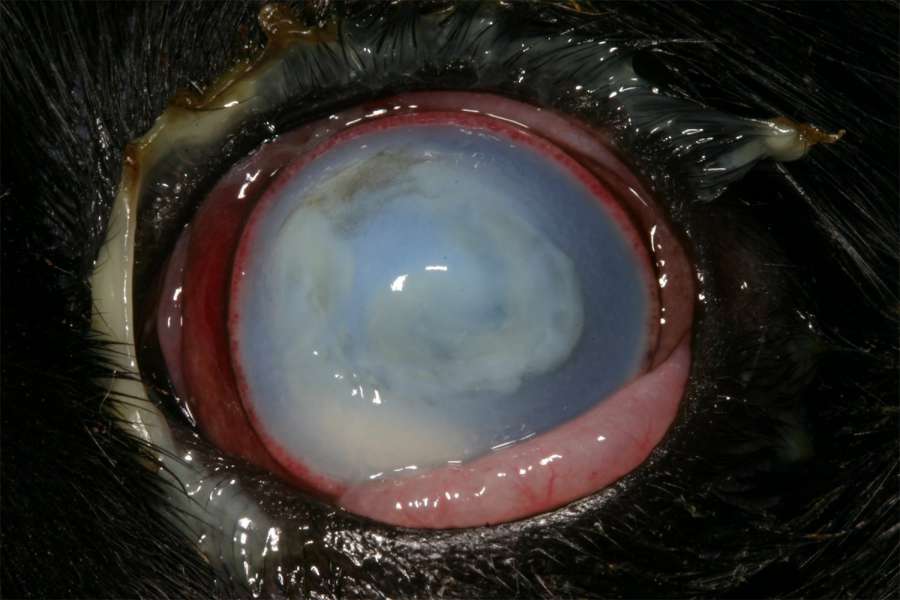
What can we do to help these eyes?
The good news is that despite all of these problems we are able to help these dogs. We can reduce the risk of developing future corneal ulcers, slow the progression of the brown pigment build-up, improve the dog’s vision and even modify the shape and size of the dog’s eyelids.
How do we do this?
- Apply ‘protective’ ointments to the eyes – a ‘sticky’ ointment can be applied twice daily to both eyes that forms a protective barrier on the surface of the eyes. This is especially useful in dogs which have excessively ‘bulgy eyes’.
- Improve the tear production – we can apply an ointment to the eyes twice daily which helps to stimulate the tear production. This ointment also has the added beneficial effect of slowing down the brown pigment build up on the surface of the eye.
- We often recommend the use of protective eye wear that your pet can wear when out on a walk. If tolerated this can significantly minimise the risk of your dog damaging the eyes. For more options see Google. Examples include:
- Doggles – these come in both plastic and mesh forms.
- Optivizor – although slightly more expensive than Doggles some dogs tolerate this face and eye visor better.
- Regular check-ups with an eye specialist who can monitor any signs of deterioration in your dog’s eye condition(s). We will also usually take close up photographs which allows us to document the changes on your dog’s eyes.
- In the more severe cases and/or if your dog’s eye conditions get worse despite the prescribed medication, surgery may be required. There are several operations that we can offer:
- A medial canthoplasty – this ‘nip and tuck’ operation essentially shortens the eyelids making the eye openings smaller. The effect of this is to improve your dog’s ability to blink and reduce the overall exposure of your dog’s eyes.
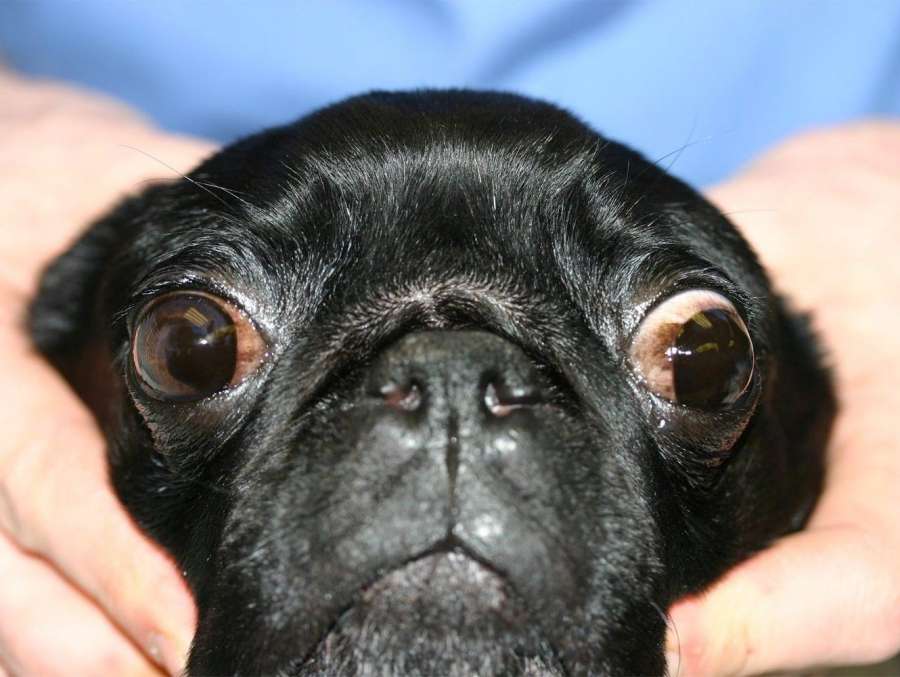
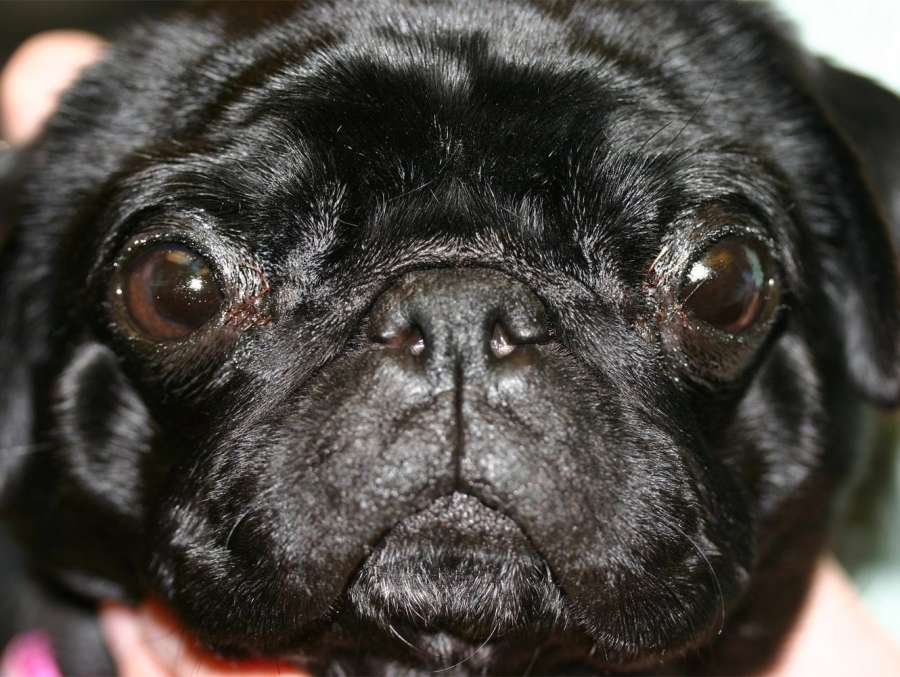
The surgery tightens up the eye openings, therefore improving the Pug’s ability to blink.
- Removal of hairs – any abnormal hairs can be removed using a variety of techniques including electrolysis, local cryotherapy and even surgical removal of the ‘root’ of the hair(s).
- Corneal cryotherapy – the surface of the eye is gently frozen using a special cryo-spray. This leads to a reduction in the level of pigment build up on your dog’s eyes.
- Corneal grafting surgery – this surgery is performed if there is a deep wound and/or infection on the surface of your dog’s eyes. It involves using the animal’s own corneal tissue to fill in the defect as well as providing a blood supply.
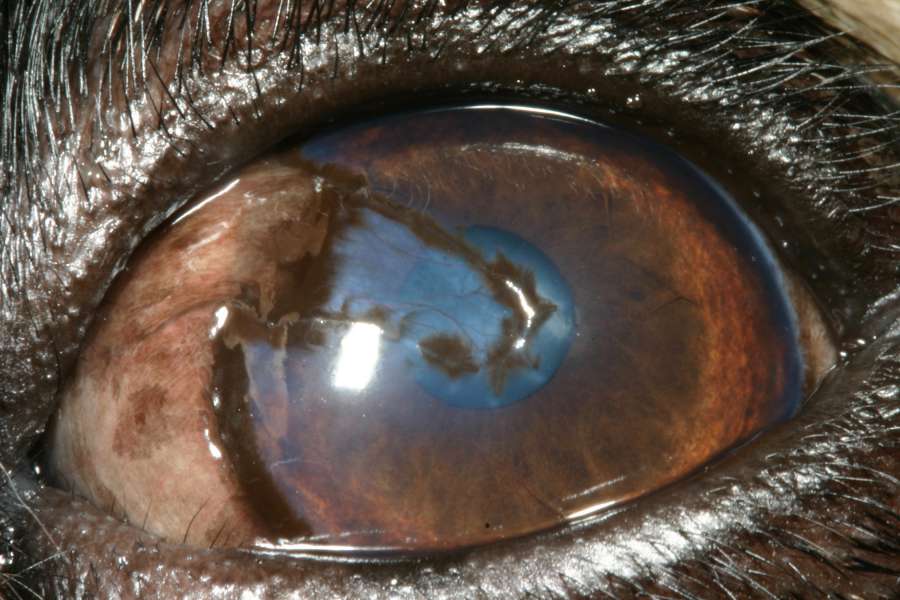
If you have any concerns regarding your dog’s eyes it is probably best to seek a consultation with us at Focus Referrals. The easiest way to do this is to speak to your own vet, who can then arrange the appointment for you. In all of these animals it is always best to see your dog before it gets a problem.
Early intervention and prevention is often better than dealing with a problem once it has happened.

